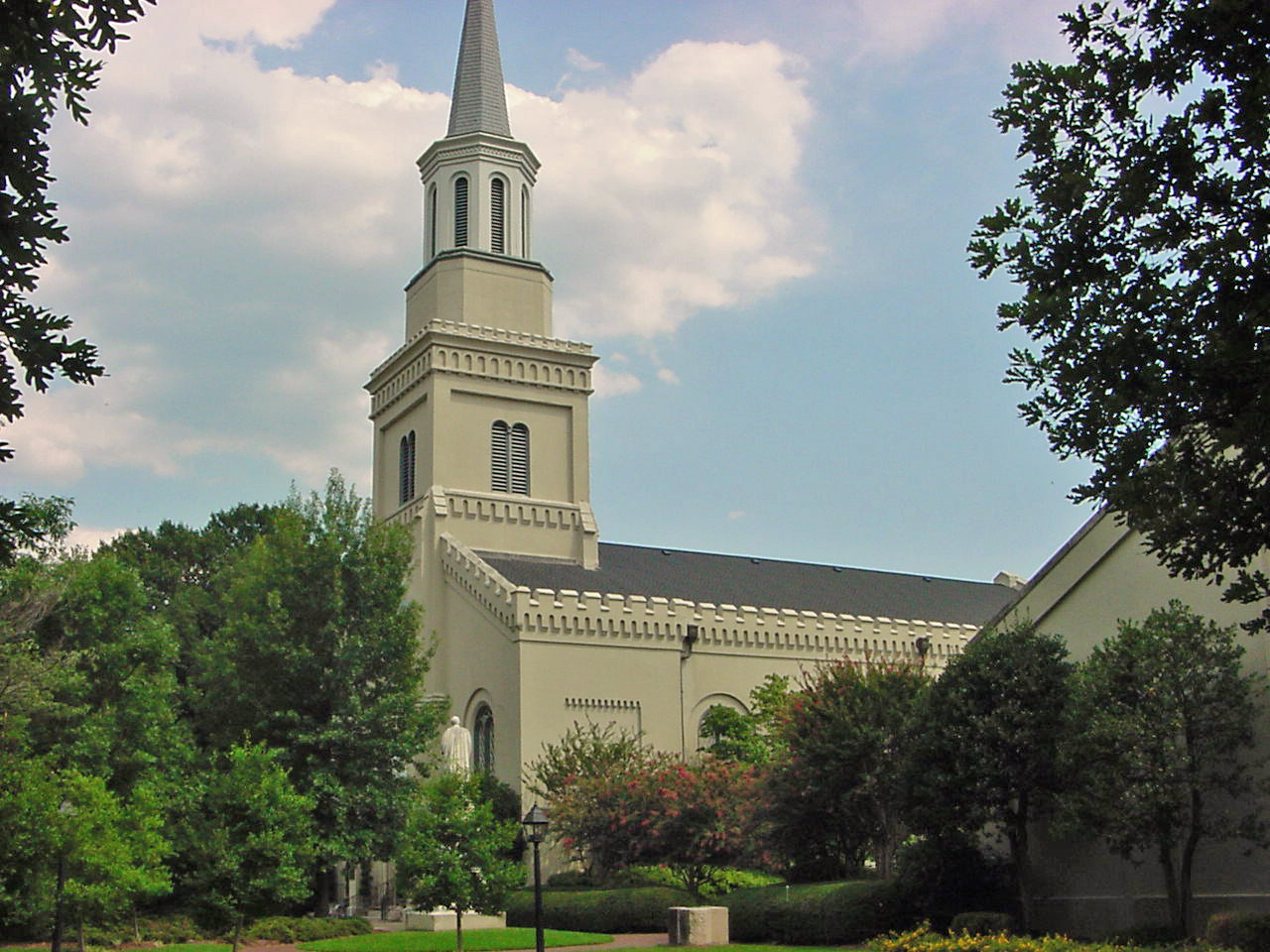
|
Home About This Site Bibliography Contact Us
|
First Presbyterian Church
 First Presbyterian Church
First Presbyterian Church624 Telfair Street, Augusta, Georgia Beautiful Presbyterian Church was built in 1809, as designed by Robert Mills, the creator of the Washington Monument and U.S. Treasury Building in Washington, D.C. The church was used as a hospital and temporary prisoner of war camp during the Civil War, and its pastor from 1858-70, an ardent secessionist, was the Rev. Joseph R. Wilson, the father of President Woodrow Wilson. The dialogue regarding secession and the eventual formation of The Southern Presbyterian Church was primarily between Rev. Wilson and Rev. George Junkin, president of Washington College in Lexington, Virginia, and father-in-law of Thomas "Stonewall" Jackson. Washington College is the same school where General Lee served as president after the war and it was renamed Washington and Lee Universitity following Lee's death. (Sorry Rev. Junkin, you may have won the war, but you lost the debate!) An interesting trivia bit is that Woodrow Wilson was known as "Tommy" as a boy, perhaps after "Stonewall." Tommy Wilson's first memory is standing at the gate of his father's home in Augusta (across the street from the church) in November, and hearing two men pass saying that Lincoln had been elected and there would be war. Not quite four years old, he ran inside to ask his father what it meant. As a boy (4 to 9 during the war), young Woodrow observed first hand suffering from the war that made him reluctant to involve the United States in World War I. Wilson remembered seeing Confederate President Jefferson Davis and his retinue taken through Augusta en route to prison at the end of the War. The picket style fence around the churchyard is a carry back to the war. During the war, when the church yard was used as a temporary detention center for prisoners brought in on the train, the wrought iron fence was dismantled and made into bullets at the arsenal and the fence was replaced with a wooden stake fence. The church now maintains this wooden fence in the style created in the War. The switching yard for the Georgia Railroad was in the Civic Center parking lot behind the church.
References: Photo from the First Presbyterian Church (www.acswebnetworks.com/firstpresaugusta)
|
| © 2007 John Rigdon |

